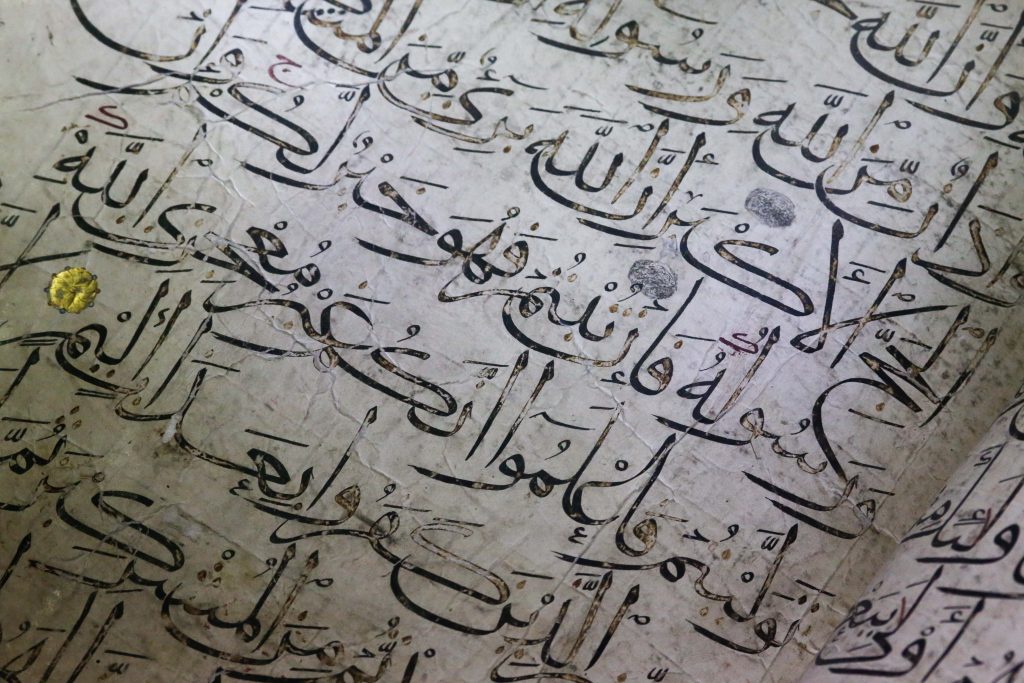How Qatar’s extensive range of facilities and preparatory programmes is getting Qatar’s football team ready for the 2022 World Cup
To many a youngster, it would surely be a dream job. Mansoor Al Ansari is General Secretary of the Qatar Football Association. And while his role requires him to establish and maintain good relations with the global football fraternity, it is young people he seeks to inspire.
He explains: “Our emphasis on youth development stems from our strategy which is to develop successful national teams across all levels, specifically the youth as they will
be the team that will participate in the 2022 World Cup.”
Developing a talented team for the 2022 World Cup is of course his key objective – and one that he hopes will see the national football team become the pride of Qatar.
He says: “Our goal is for our national teams to perform well at all the competitions with the aspiration of qualifying for all major tournaments such as the FIFA World Cups and winning the continental and regional competitions.”
“We have great facilities for our youth players at the Aspire Academy, excellent coaches, outstanding education programmes, and we organise various friendly matches, all with the aim of developing youth and senior teams so they can compete at the highest level.”
He maintains that despite not qualifying for the 2018 World Cup in Russia, Qatar’s national football team will be ready for its own tournament. “We are certain that our national team will play to the best of their abilities during the 2022 World Cup,” he says. “After all, they will be representing their country as Qatar hosts the biggest football event on the planet.”

“We are on the right track with our team development plans for the 2022 World Cup. We are increasing training and organising friendly matches, fostering a high performance culture, providing a comprehensive performance analysis system and providing periodic training courses to referees, coaches, club officials, and players on the rules of the game to ensure our national team has what it takes to compete.”
Al Ansari previously headed operations at the QNB Stars League, which has attracted talent such as Xavi Hernandez and Wesley Sneijder.
He says: “Having names such as Hernandez and Sneijder shows just how much the league has developed over the years. These are world-known players that can exchange their knowledge and expertise with our local players and help bring the competition level of the league to a higher level. Having them definitely gives the league a great reputation amongst other leagues in the region and the continent.”
More widely, he sees that sport is central to Qatar’s future. He explains: “Qatar has made a name for itself at the local, regional and international sports scene.”
“We have a day in the year on which the whole country has a public holiday to take part in their favourite sport. The National Sport Day is dedicated to ensuring that the
whole population has the opportunity to adopt a healthy lifestyle through sports.”
“Our country’s 2030 vision places special emphasis on sports and the importance of having an increased sports participation within the local community.”
To this end, the QFA runs many social responsibility initiatives, community-specific leagues, and grassroots programmes to promote a healthy lifestyle for all Qataris.
The Association also works with world-renowned institutions such as Aspire and Aspetar. The Aspire Academy was set up to discover and develop the best Qatari athletes in all sports, and is a prime source of new talent for the national teams.
Indeed, the Aspire football program has been a resounding success, with all players on the Qatar U-19 national team that won the AFC U-19 Championship in Myanmar, and qualified for the 2015 FIFA U-20 World Cup in New Zealand, coming from the Academy.
At the same time, Aspetar plays a significant role in the performance aspect of all the players. Al Ansari says: “Aspetar has established itself as a leading specialised
orthopaedic and sports medicine hospital and the very
first in the Gulf region.”
Together, all these parts should come together as a recipe for sporting success. Al Ansari says: “The entire football ecosystem which has been set up in Qatar works seamlessly in the development and improvement of the sport and the athletes.”
We are proud of Qatari Women’s achievements, successes and their ability to participate strongly in Qatar’s recent progressive development.
On the occasion of International Women’s Day 2018, the GCO commissioned this short video in celebration of Qatar’s brilliant women.
The Museum of Islamic Art, a cultural icon in the Middle East, is advancing Qatar’s vision through its architectural design and breathtaking collections
Museum of Islamic Art (MIA) is the first world-class museum to be developed in the Gulf. Designed by the great Chinese-American architect, I. M. Pei, MIA is a globally acclaimed museum that stands majestically on Doha’s Corniche, with panoramic views across the waterfront. Its success has helped establish Qatar as a cultural capital of the Middle East.
MIA was the first of the major capital developments and flagship projects initiated by Qatar Museums. The museum invites people to learn about the full scope of Islamic art, building a true appreciation for the significance and importance of Islamic culture and its contribution to the world we live in.
The museum is home to one of the finest collections of Islamic art in the world. It showcases Qatar’s world-class collections of Islamic art stretching back over 1,400 years to the present day and celebrates both the secular and religious aspects of diverse geographies and regions, right the way across the Arab World.
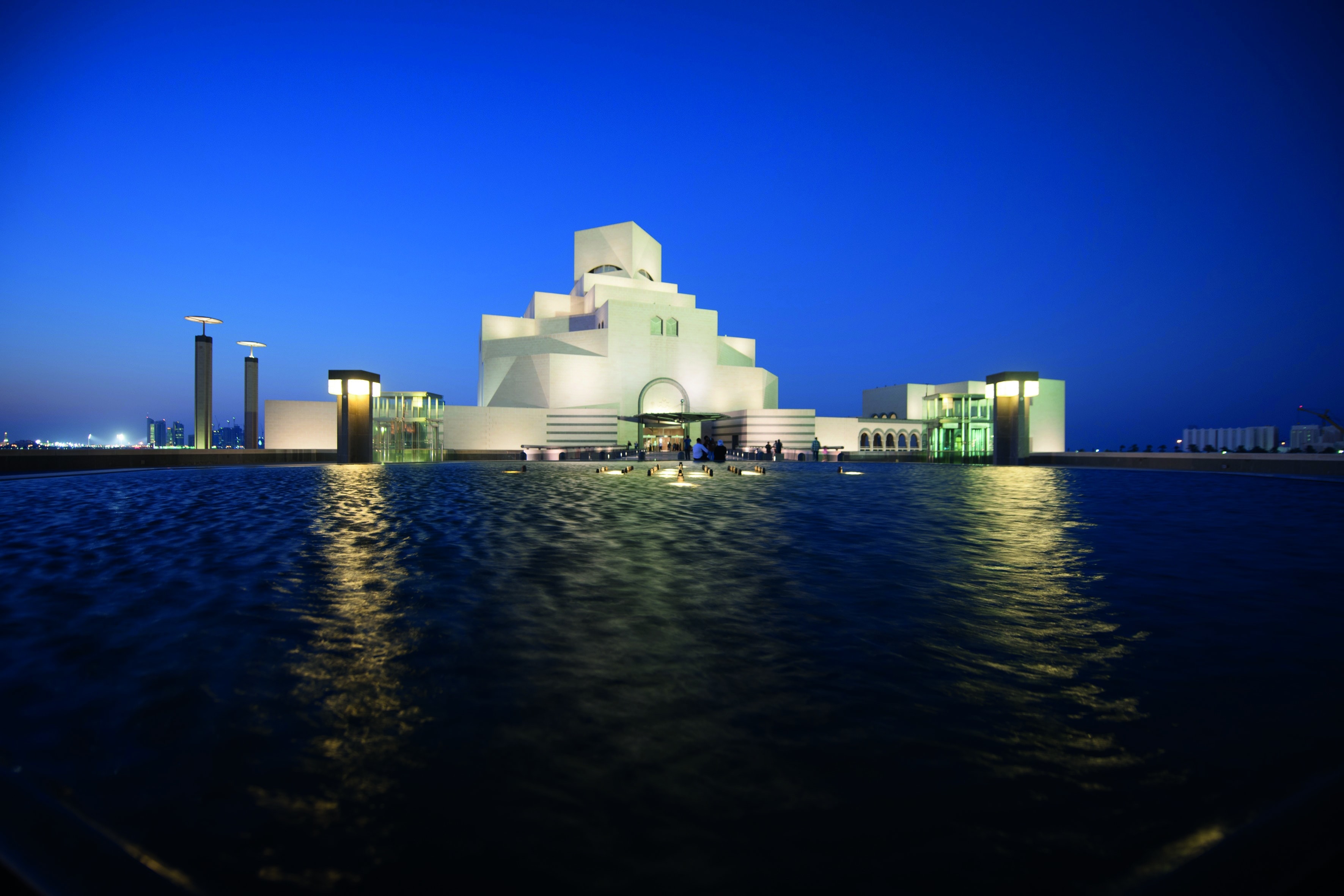
Collected from three continents, including countries across the Middle East, and reaching as far as Spain and China, the Museum’s artworks date from the 7th through to the 20th century.
The collection includes manuscripts, ceramics, metal, glass, ivory, textiles, wood and precious stones. Drawn from the treasure-houses of princes to the personal homes of ordinary people, each object tells a fascinating story about itself and the world it comes from.
Together they celebrate the influence, importance and contribution of Islamic art and culture on the world. The collections at MIA are Islamic in nature, though many of them are non-religious.
Amongst the many highlights of the collection include one of the oldest surviving Islamic astrolabes in the world dating back to the 9th century, one of the largest Islamic Coin collections totalling almost 100,000 items, and incredibly rare Ka‘ba keys from the 14th-century Mamluk era – of particular interest in Islamic art and culture.
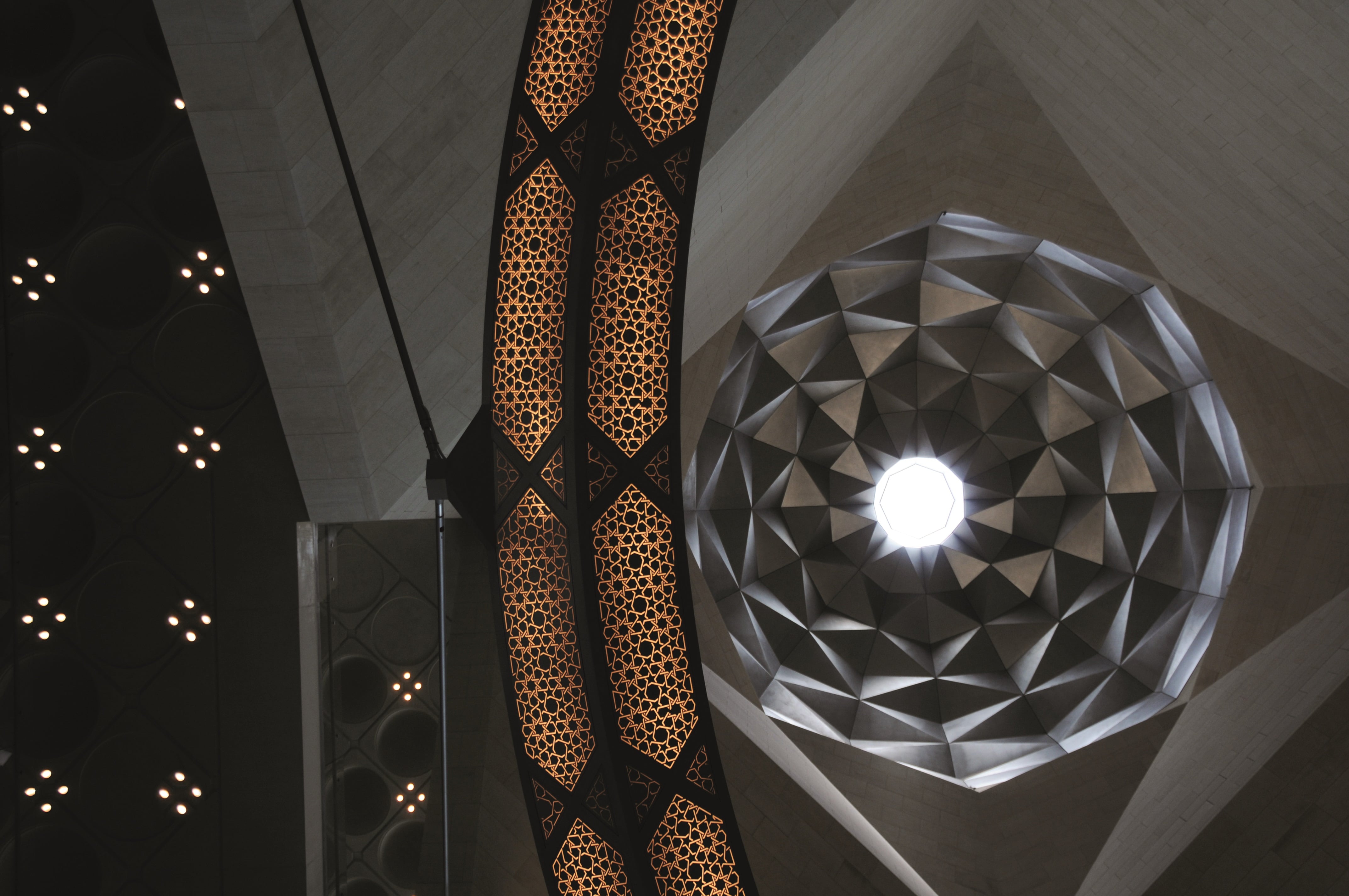
An architectural masterpiece – where traditional Islamic architecture meets the 21st century, the museum is a work of art in itself. Designed by Pritzker Prizewinning Chinese-American architect I. M. Pei, it has quickly become an iconic feature of the Doha landscape. It draws much of its influence from ancient Islamic architecture, notably the Ibn Tulun Mosque in Cairo.
The Museum is comprised of a main building with an adjacent education wing connected by a large central courtyard. The main building rises fivestoreys, topped by a high domed atrium within a central tower.
The centrepiece of the atrium is a curved double staircase leading up to the first floor. Above it floats an ornate circular metal chandelier echoing the curve of the staircase. An oculus, at the top of the atrium, captures and reflects patterned light within the faceted dome. A five-storey 45-metre tall window on the north side gives spectacular panoramic views across the bay.
Reaching increasing audiences at home and abroad as a pioneer museum in the Gulf, MIA’s audiences have been growing steadily year on year since the museum opened in 2008. Last year, MIA welcomed just under half a million visitors.
This growth continues, with data highlighting how visitor numbers are increasing further still compared to the previous year. And MIA recently celebrated one of its most successful exhibitions to date, with more than 90,000 visitors so far attending Imperial Threads: Motifs and Artisans from Turkey, Iran and India.
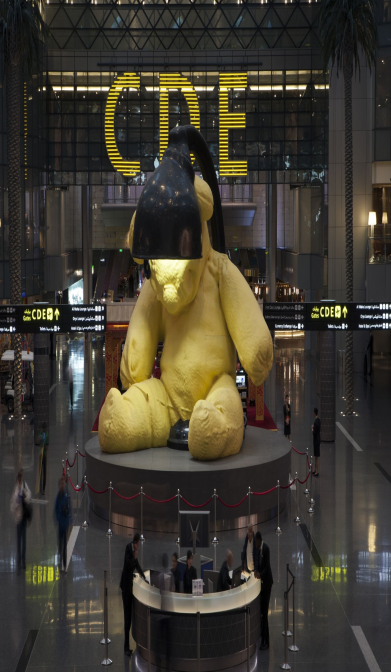
Qatar Museums (QM) connects the museums, cultural institutions and heritage sites in Qatar and creates the conditions for them to thrive and flourish.
Under the patronage of His Highness the Emir, Sheikh Tamim bin Hamad Al Thani, and led by its Chairperson, Her Excellency Sheikha Al Mayassa bint Hamad bin Khalifa Al Thani, QM is consolidating Qatar’s efforts to become a vibrant centre for the arts, culture and education, in the Middle East and beyond.
Since its foundation in 2005, QM has overseen the development of MIA, Mathaf: Arab Museum of Modern Art, and the Al Zubarah World Heritage Site Visitor Centre. QM also manages the QM Gallery at Katara Cultural Village, the ALRIWAQ DOHA Exhibition Space and the Fire Station: Artists in Residence.
How the National Museum of Qatar will be a window into Qatar’s identity and a platform for dialogue about Qatar’s future
Opening officially in December 2018, the National Museum of Qatar tells the story of the people of Qatar, giving voice to the country’s rich heritage and history whilst celebrating its future.
The museum is one of the most significant cultural projects in the country and one of the most ambitious museum projects of its kind, anywhere in the world.
It highlights Qatar’s commitment to developing cultural spaces that develop, promote and sustain a thriving cultural sector and build a national spirit of participation.
The National Museum highlights Qatar Museums’ commitment to fulfilling the cultural goals of Qatar National Vision 2030, contributing towards creating a strong and sustainable cultural infrastructure for Qatar, and helping to build a diversified, knowledge based economy.
The National Museum will celebrate Qatar’s culture by preserving and reconnecting visitors and residents with the country’s traditions.
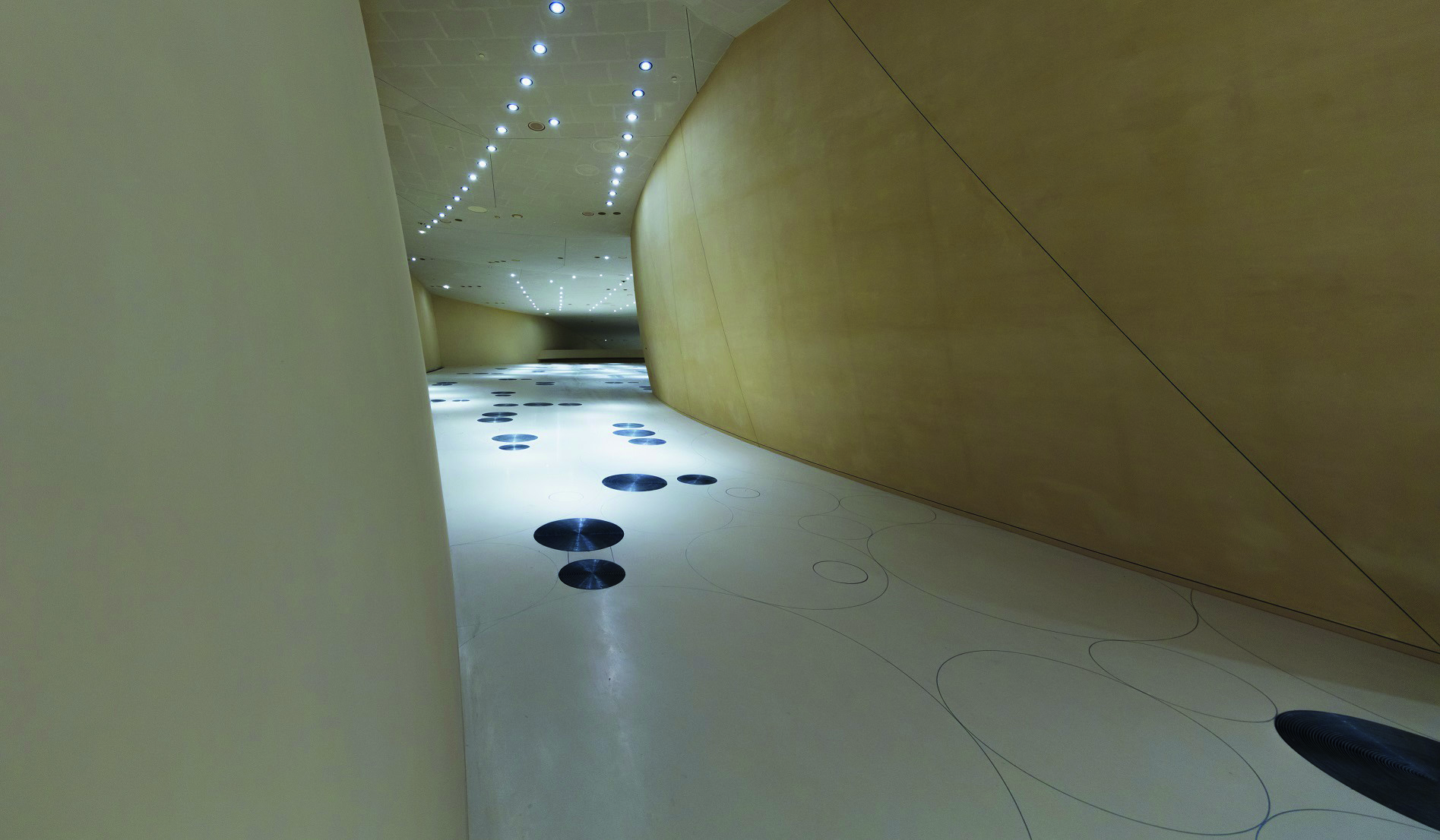
The museum is the physical manifestation of Qatar’s proud identity, connecting the country’s history with its diverse and cosmopolitan present.
Visitors can learn about Qatar’s ancestors and the formation of early cities, as well as the modernisation of Qatari society.
Exhibitions will combine historic objects and contemporary influences, opening up a dialogue around the impact of rapid change. Innovative presentation techniques will excite audiences and push boundaries.
Designed by Pritzker Prize-winning French architect Jean Nouvel, the interlocking disc design was inspired by the desert rose. It evokes the life of the Qatari people between the desert and the sea.
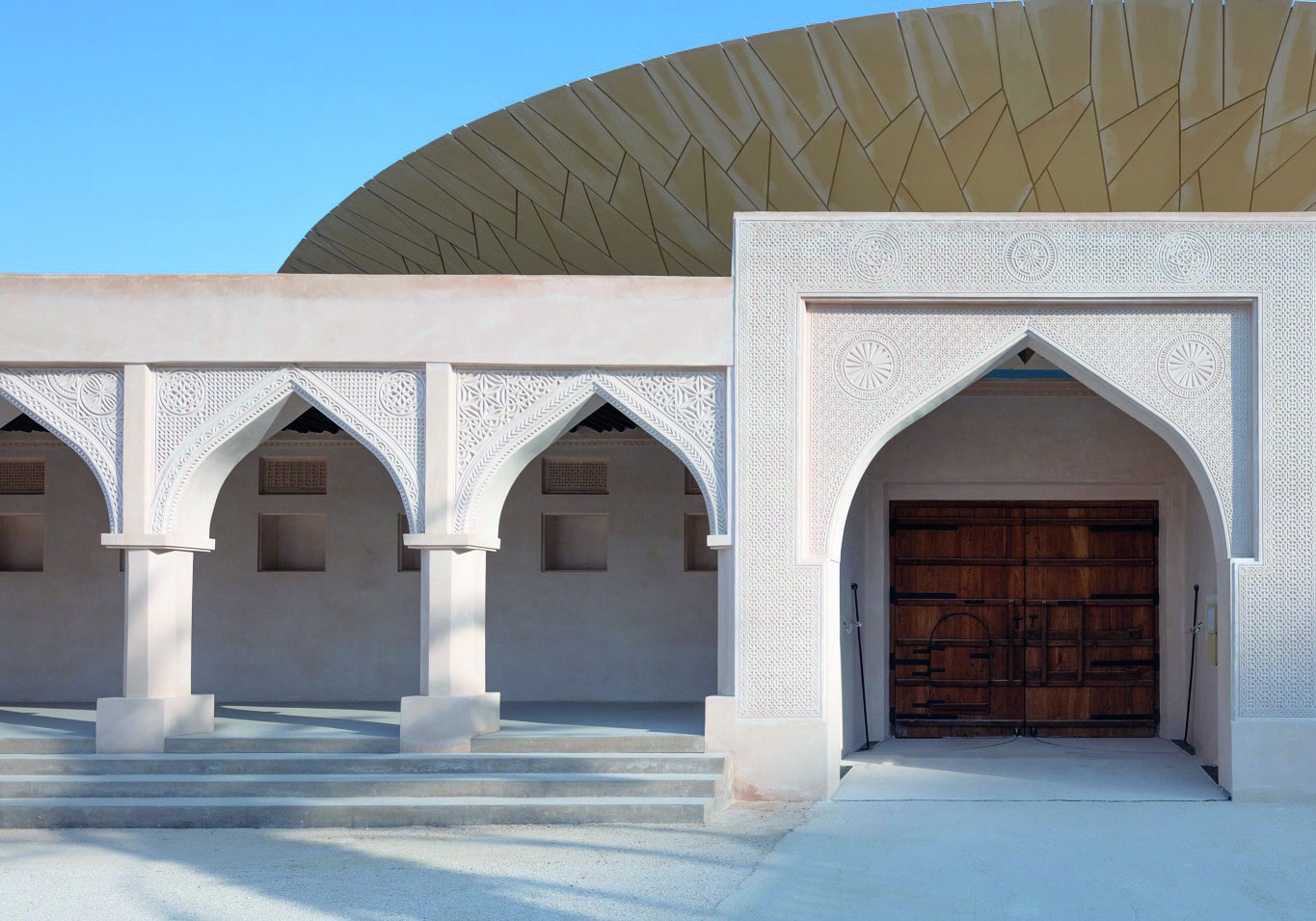
Seemingly growing organically out of the ground, the museum’s structure surrounds the Old Palace of Sheikh Abdullah Bin Jassim Al Thani. The Old Palace, a former Royal Residence and seat of government, was converted into the original National Museum of Qatar in 1975. It is one of most recognisable landmarks in the country and serves as a monument to a historic way of life in Qatar.
The palace has a unique historical significance for the country and will be a fitting central exhibit within the National Museum when it opens.
The museum will be a thriving hub for the public, students, and museum professionals. It will redefine the role of a cultural institution, fostering a spirit of participation and providing the conditions for discovery to thrive.
It sits at the heart of a public realm that is taking shape around a key civic quarter – one that connects it with the Art Mill project and some of Qatar’s most cherished cultural institutions including MIA and QM Gallery Al Riwaq.
Taken together, these reflect the wider urban, civic and cultural development of Doha.
How Qatar University has become the intellectual hub of Qatar and is shaping its future through education and ground-breaking research
Since its inception in 1973, Qatar University (QU) has served as Qatar’s primary institution of higher education. With around 20,000 students in its ranks, it is today a beacon of academic and research excellence in the GCC region.
QU is committed to providing high-quality education in areas of national priority. Underpinning this commitment is the goal to align its colleges, programmes and courses with established international standards and best practices. As a result, the organisation has been successful in its accreditation initiatives, earning the endorsement of numerous leading international accrediting bodies.
Nine colleges – Arts and Sciences (CAS); Business and Economics (CBE); Education (CED); Engineering (CENG); Health Sciences (CHS); Law (LAWC); Medicine (CMED); Pharmacy (CPH); and Sharia and Islamic Studies (CSIS) – offer the widest range of academic programmes in Qatar, tailored to meet the needs of Qatari society.
The College of Health Sciences was a new addition in January 2016, emerging from the Health Sciences Department formerly housed in the College of Arts and Sciences. Following this, a Health Cluster comprising the colleges of Health Sciences, Medicine and Pharmacy, and the Health Clinic was established to promote interdisciplinary and inter-professional collaboration and enhance the quality of health education and research at the University.
QU offers the first-ever Gulf Studies PhD Programme in the region. The programme provides an advanced interdisciplinary understanding of issues related to GCC countries, and advances a level of scholarship on Gulf issues that is much-needed now.
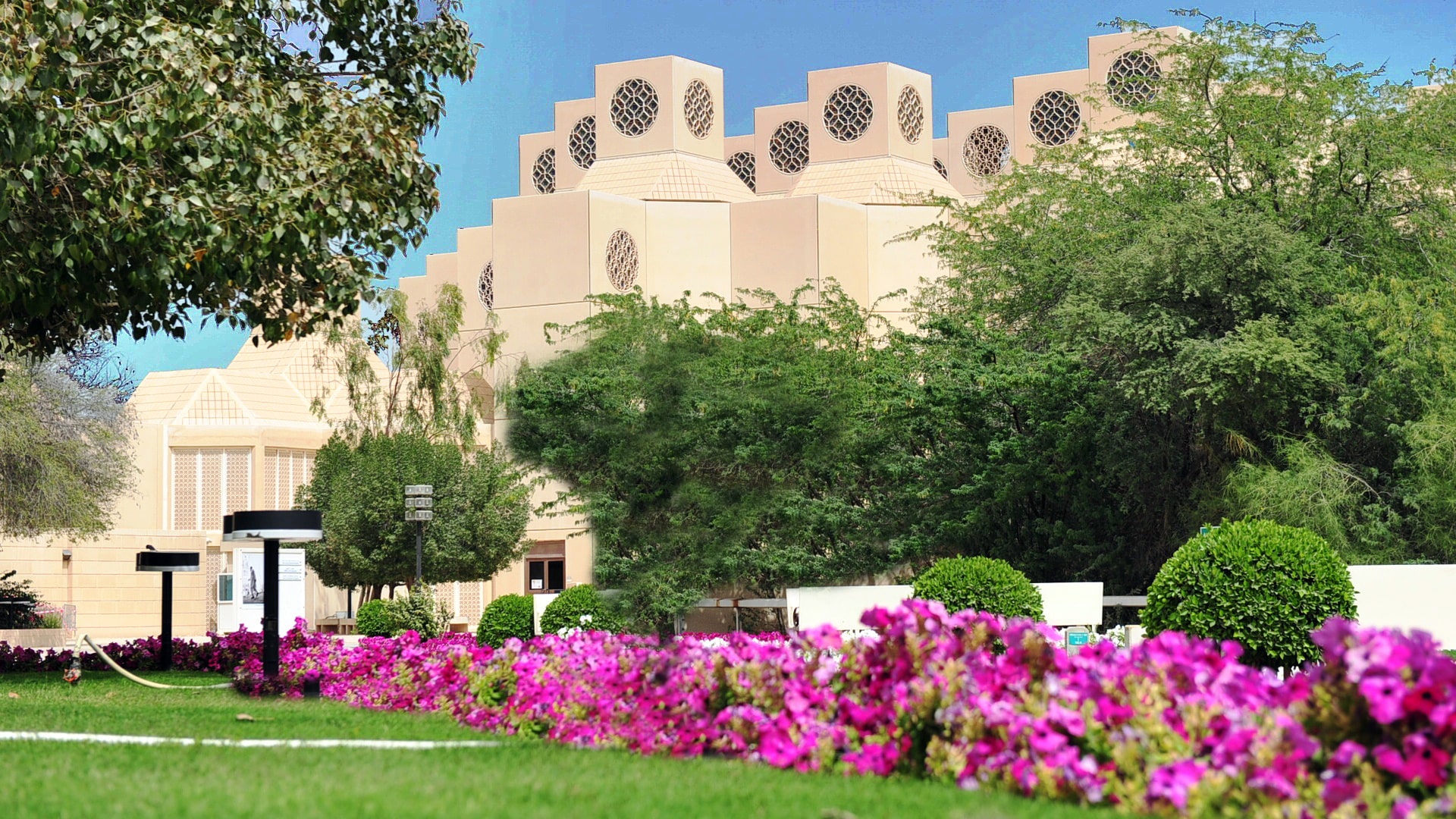 Research is an integral part of the academic environment at QU and is bolstered by an ambitious five-year roadmap addressing national priorities and listing four priority research areas – Energy, Environment and Resource Sustainability; Social Change and Identity; Population, Health and Wellness; and Information, Communication and Technologies (ICT) – a state-of-the-art Research Complex, and 14 research centres of excellence. It is further enhanced by over 400 collaborative projects across 130 countries.
Research is an integral part of the academic environment at QU and is bolstered by an ambitious five-year roadmap addressing national priorities and listing four priority research areas – Energy, Environment and Resource Sustainability; Social Change and Identity; Population, Health and Wellness; and Information, Communication and Technologies (ICT) – a state-of-the-art Research Complex, and 14 research centres of excellence. It is further enhanced by over 400 collaborative projects across 130 countries.
QU’s interdisciplinary efforts have engendered many award-winning projects and critical findings on issues relevant to society such as lifelike prosthetic hands; social robots in autism therapy; robotic endoscopy for early detection of stomach cancer; and state-of-the-art connected vehicles technology that contributes to addressing road safety and driving challenges in Qatar and beyond, to name but a few.
QU plays a pivotal role as well in promoting research on the marine environment, atmospheric science and human health; the development of biofuels using microalgae; carbon dioxide sequestration; energy efficient systems and smart buildings; and cloud cooling systems for 2022 FIFA World Cup™ stadiums.
Additionally, QU boasts a unique marine research vessel, ‘Janan’. The vessel launched a new era of research at the University and provides invaluable opportunities for students of biological and environmental sciences and marine science to conduct environmental studies and research in the waters of Qatar and the Gulf region.
One of the University’s key research initiatives – Qatar Biofuel Project, the only one of its kind in the region – aims at finding solutions for affordable, sustainable bio fuels specifically for use by the aviation industry.
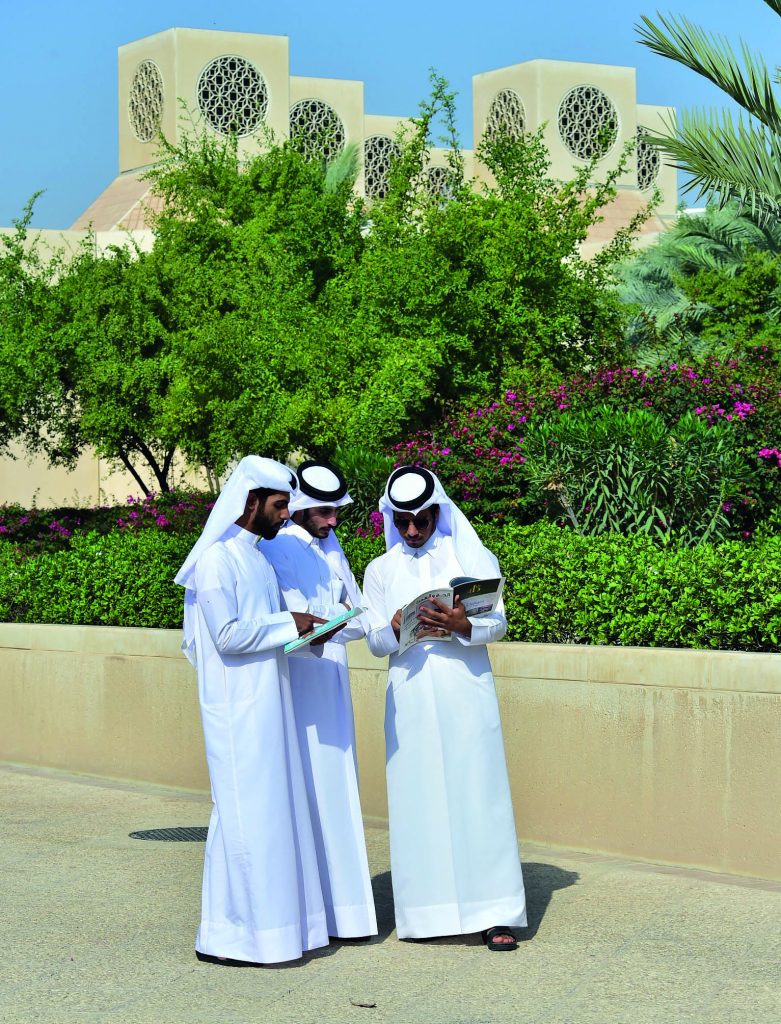
Community engagement is at the heart of QU’s mission and vision. The University prides itself on the quality of its students and alumni, and is committed to ensuring that campus life is an enriching environment for encouraging academic excellence, volunteerism, civic responsibility and leadership. Its Alumni Association brings together 40,000 alumni, current students and members of Qatari society.
Programmes such as Al Bairaq, Life is Engineering Project, Gasna, and the Annual Computing Contest are also aimed at raising school students’ awareness of their future role in contributing to the country’s development. Additionally, members of the community can undertake further education and training in various disciplines through professional development programmes at its Continuing Education Office, College of Pharmacy, and College of Law.
QU is advancing its goal to become a leader of economic and social development in Qatar through signed agreements, and academic collaborations and partnerships with industry, government, academia, business and civil society in Qatar and beyond.
Documenting the Islamic world, Arab cultural heritage, and the modern history of
the Gulf
In June this year, Her Highness Sheikha Moza bint Nasser Al Missned met with His Holiness the Pope in Vatican City, where an agreement was signed between the Vatican Library and the Qatar National Library, along with the Qatar Foundation, to digitise the Vatican’s manuscripts relating to the Gulf and other Islamic regions.
This is the most recent library digitisation programme that Qatar has undertaken. In January 2013, the British Library and Qatar Foundation entered into a longterm partnership to create an online resource portal documenting the Islamic world, Arab cultural heritage, and the modern history of the Gulf.
Described by Oliver UrquhartIrvine, who leads the partnership, as one of the most exciting “global knowledge partnerships in recent years”, the portal makes a wealth of original, interpretative, contextual, and pedagogical resources in Arabic and English freely available to the general public. In its first 12 months, the Digital Library received 2.5 million-page views from over 308,000 users across 219 countries. Since then, a joint agreement has been signed to digitise a further 1,125,000 pages of content from Arabic science and mathematics manuscripts.
Project highlights include the launch of a new digitised photo album showing historical and architectural views of Mecca and Medina dating back over a century to coincide with the Hajj in 2014. These incredible pictures offer a unique viewpoint on how the pilgrimage has changed over time.
Creating such an extensive catalogue of multi-lingual digital sources has been an ambitious, and sometimes challenging, project for the British Library and Qatar Foundation. However, as Her Highness Sheikha Moza bint Nasser Al Missned noted, the partnership has “helped shed light on the Gulf region’s fascinating history and culture.”
British Library Chief Executive Roy Keating concluded, “there’s something about finding a shared vision that has unleashed an intellectual and creative energy that I think is going to have really long-lasting consequences…The more research we do, the more we uncover…and we hope this is just the beginning.”
From the breath-taking oil paintings of Al Zubarah fort to mixed media calligraphic pieces, these are works that define a nation.
Qatar Museums last year chose to honour one of the country’s foremost artists and his cultural contribution with Story of Ingenuity, a retrospective exhibition of Yousef Ahmad’s most notable pieces.
The event featured a selection of works showcasing Ahmad’s artistic journey, including striking early oil paintings from the 1970s, and more recent conceptual pieces.
The exhibition demonstrated Ahmad’s strong affection for Qatar, be it “celebrating the gentle quietness of Qatar’s sea or the flat expanses of its desert and serene openness of the sky.”
It ran from 11 November 2014 to 28 March 2015 at QM Gallery Katara, during which time thousands of visitors could see these seminal works, which have previously been exhibited around the world including in the US, Europe and the Middle East.
A pioneer of Qatar’s modern art movement, Yousef Ahmad was born in Qatar in 1955. He was appointed Head of Art and Exhibitions within the Ministry of Information in 1976, and travelled to the US in 1979 to study a master’s degree, specialising in painting.
Returning to Qatar, he taught art appreciation at Qatar University for more than 20 years, receiving an Honorary Order of Merit in acknowledgement of his outstanding career.
Opening the exhibition, Ahmad described his artistic passion for his native land, saying: “As a local artist who has had the privilege to train abroad, I find so much in our environment that excites and inspires me. What’s more, the opportunity to share my works with the people of Qatar is inspiring and humbling, and I hope that my journey encourages future generations of local artists to follow their creative dreams.”
He added: “I’m proud to play an important part in the development of our country’s artistic community and I look forward to seeing it evolve and develop at this incredibly important time.”
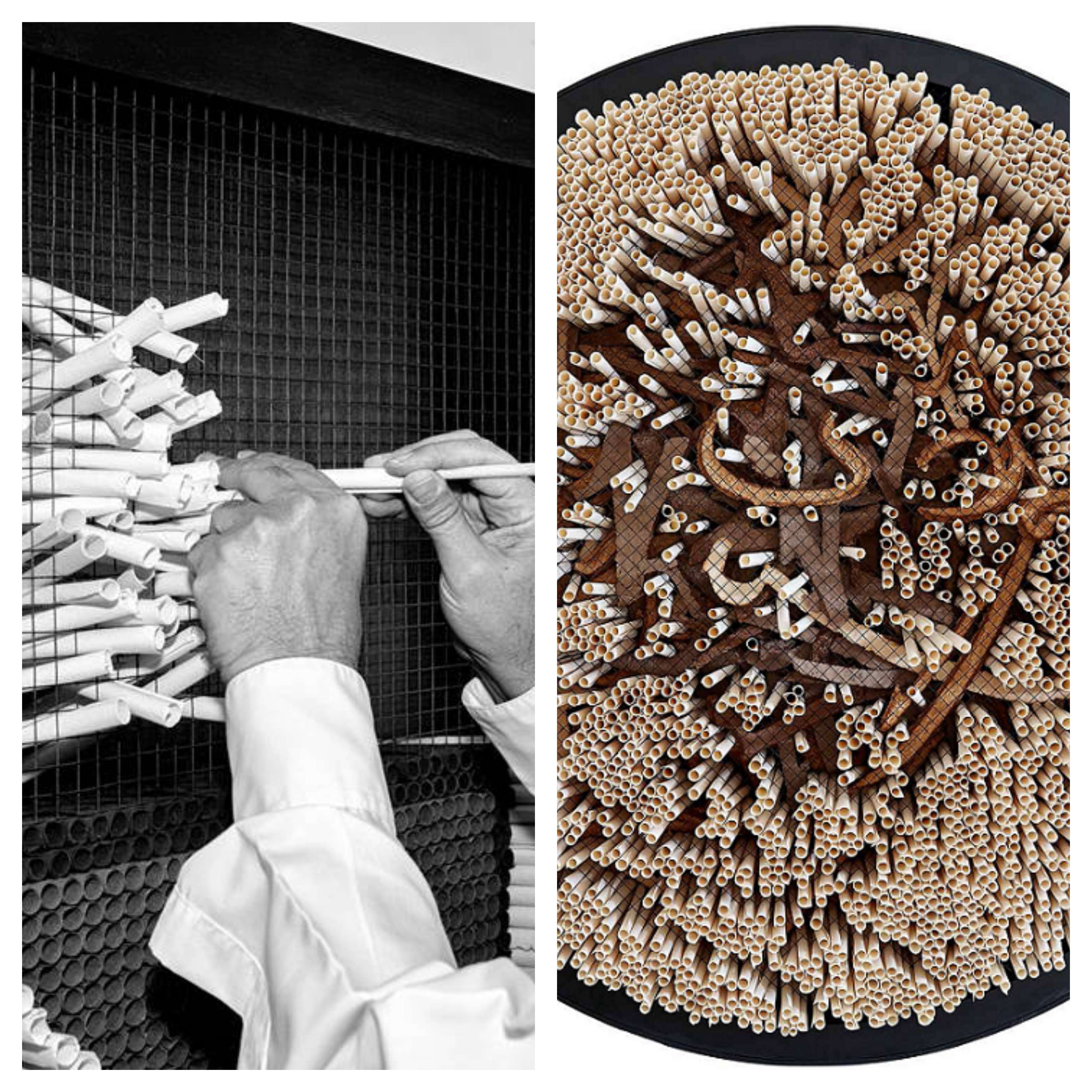
William Scannell was six years old when he told his dad that he wanted to learn Arabic. The family had just got back from a holiday in the Middle East, so the request made sense. Except that the Scannells live in Anchorage.
“He’s a kid from Alaska whose family is Boston Irish, so learning Arabic struck me as useful as an Egyptian taking up the language of the Yupik Eskimos,” recalls William’s dad, Bill Scannell. So Bill enrolled his son in an online Arabic course, confident he’d soon drop out.
Except he didn’t. In fact, William, now ten, has completed seven semesters of Arabic through Johns Hopkins, four Arabic summer camps at Concordia Language Villages, an immersion program with the Middlebury Monterrey Language Academy, and a month at a Palestinian elementary school in Jerusalem.

“William can now read, write, and speak Arabic: it is part of who he is,” says his dad. “He’s become a life-long learner of the native language of close to half a billion people across the Middle East and North Africa; and the religious language of Earth’s billion-plus Muslims.”
No wonder William Scannell recently became the youngest ever recipient of a grant from Qatar Foundation International (QFI). Two years ago, he participated in QFI’s winter clothing drive, which led to Alaskans sending more than half a ton of clothing to Syrian refugees. And, last year, he launched Any Refugee, a program that encourages children across the world to send postcards to refugees.
“Empathy is what makes us better human beings. My son’s love of Arabic helped him connect with the very real problems currently playing out in the Levant.”
― William’s dad
William says that sending clothing or a postcard to a person you’ve never met is a gesture to show them that someone cares: “[The cards] fill them with happiness, because they didn’t even know the person and yet they still got a postcard,” he adds.
This year at the 27th Annual Alaska Philanthropy Day Awards Luncheon, William was recognized as Alaska’s Outstanding Youth for his humanitarian work. “William has been charting his own course toward adulthood. For him, studying Arabic has been not just an end unto itself, but a tool he uses to express his greatest quality, which is his empathy for others,” says William’s dad.
As William said to his sixth-grade classmates while they were painting postcards, “Refugees can be anyone. Albert Einstein was a refugee.”
